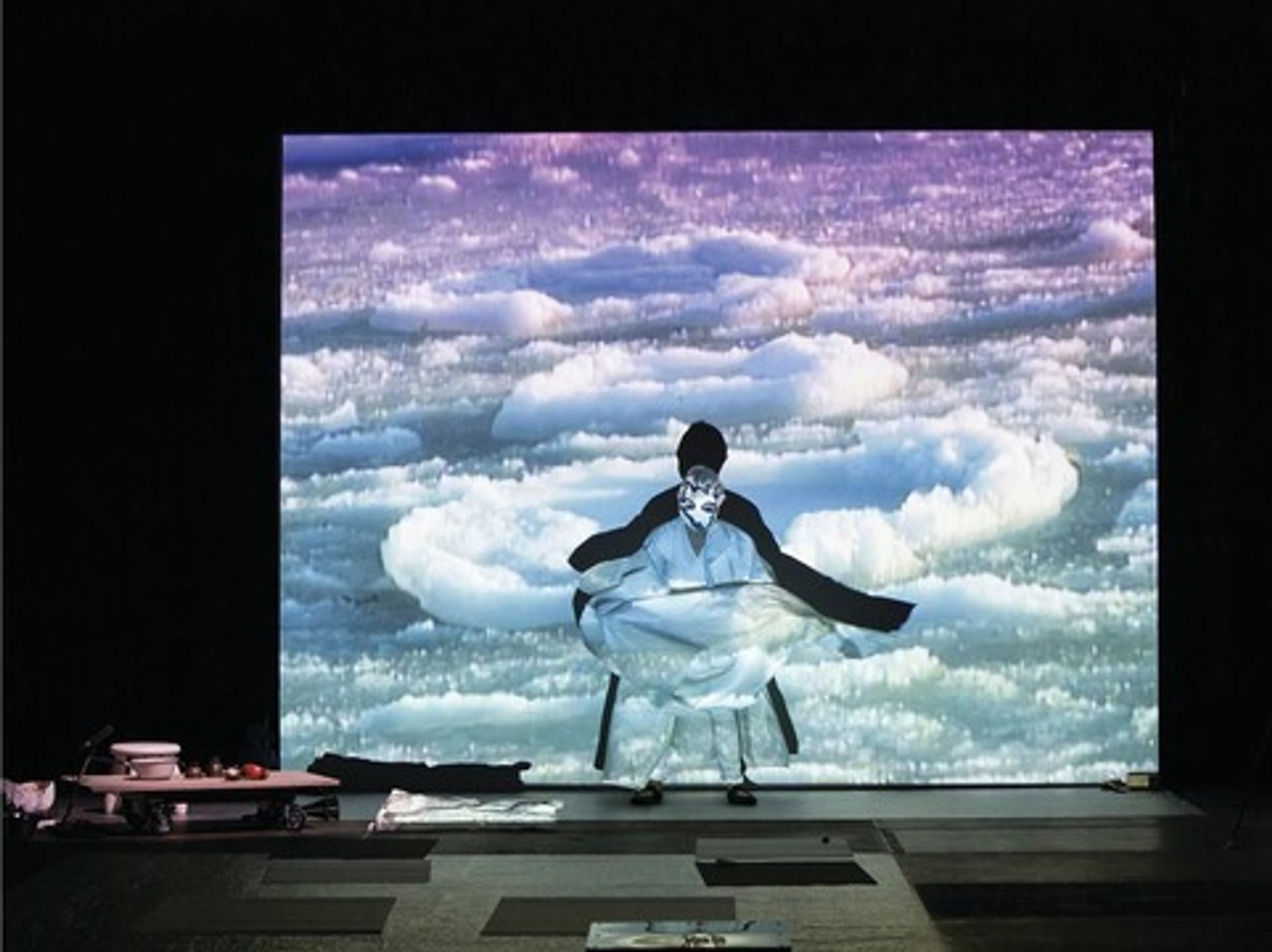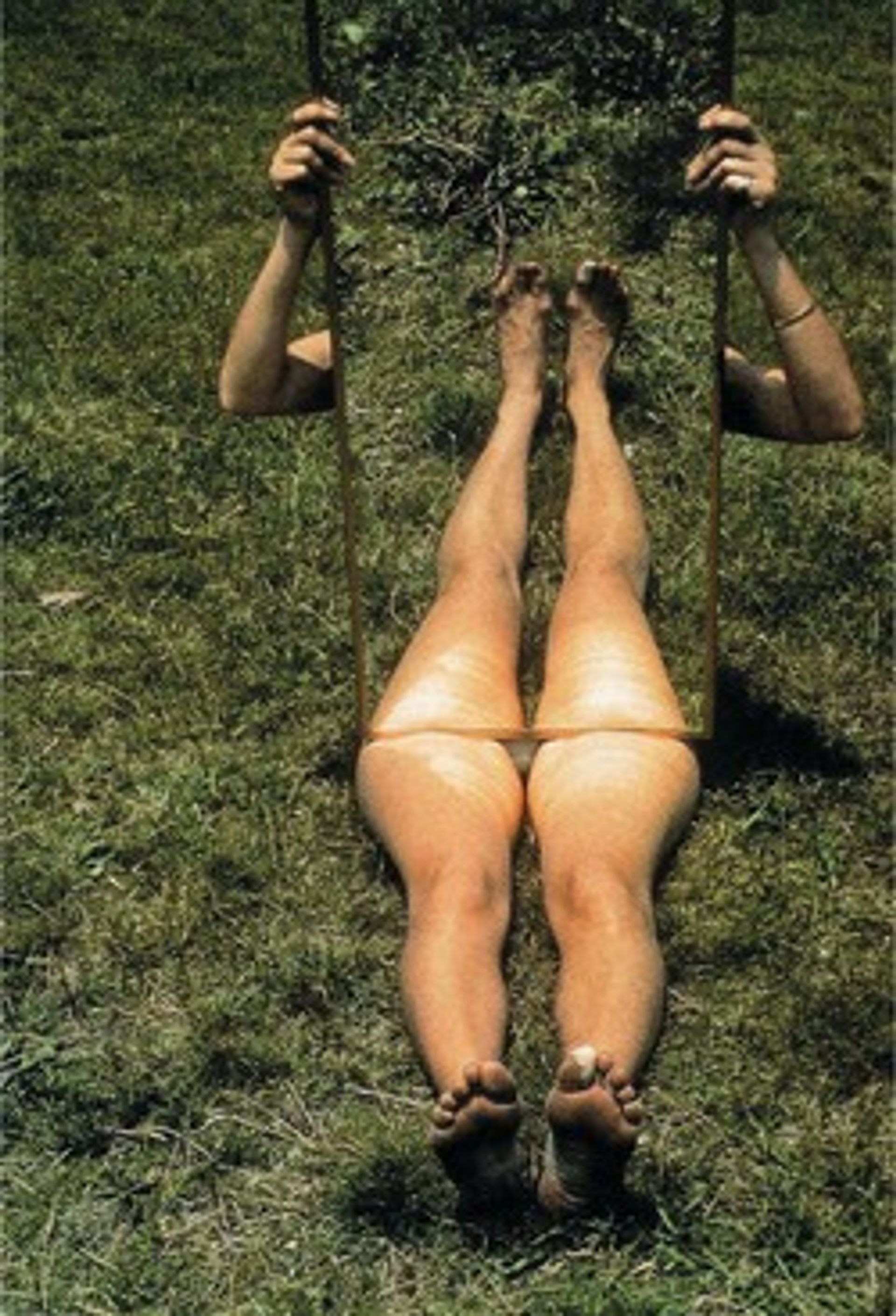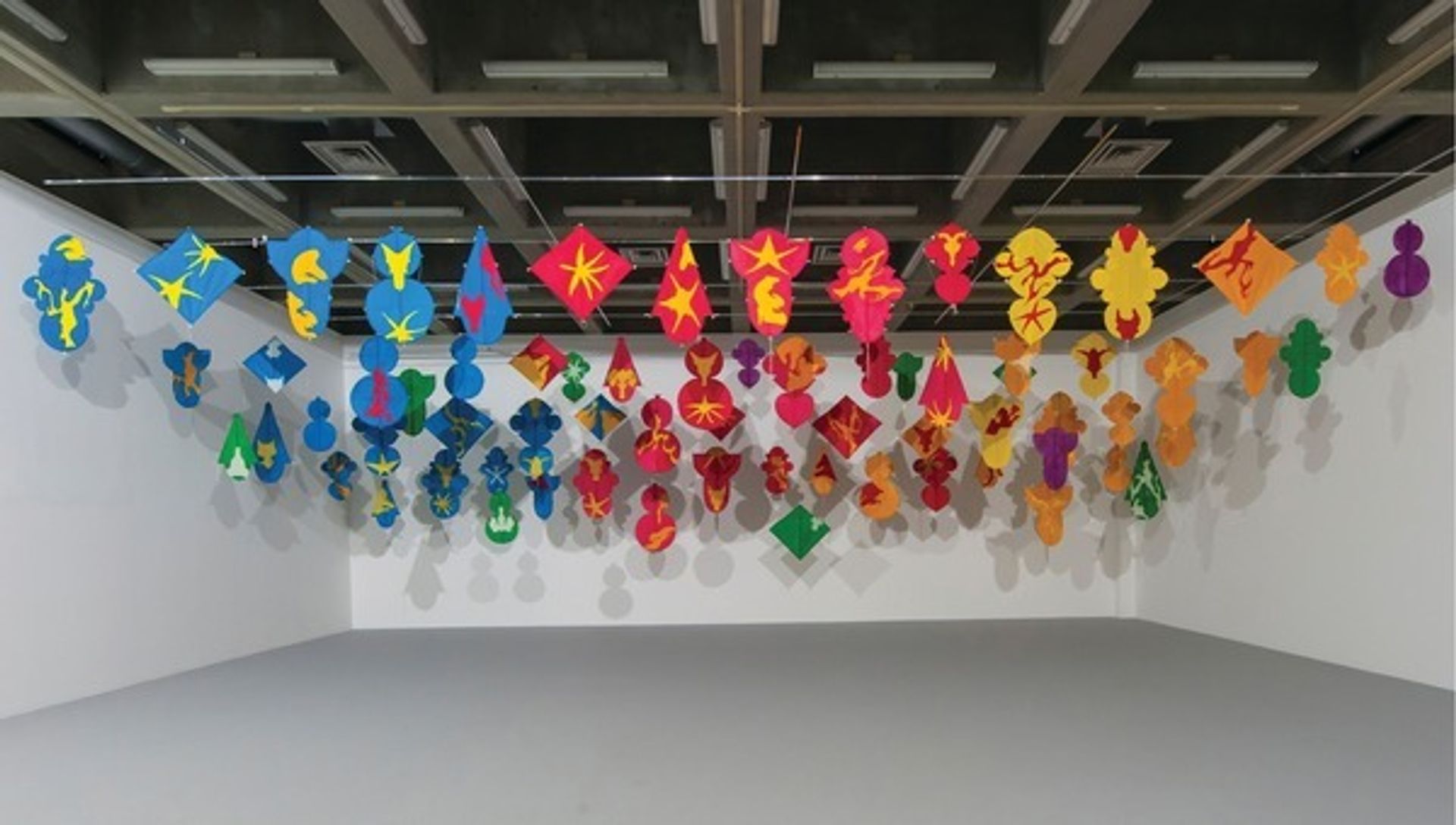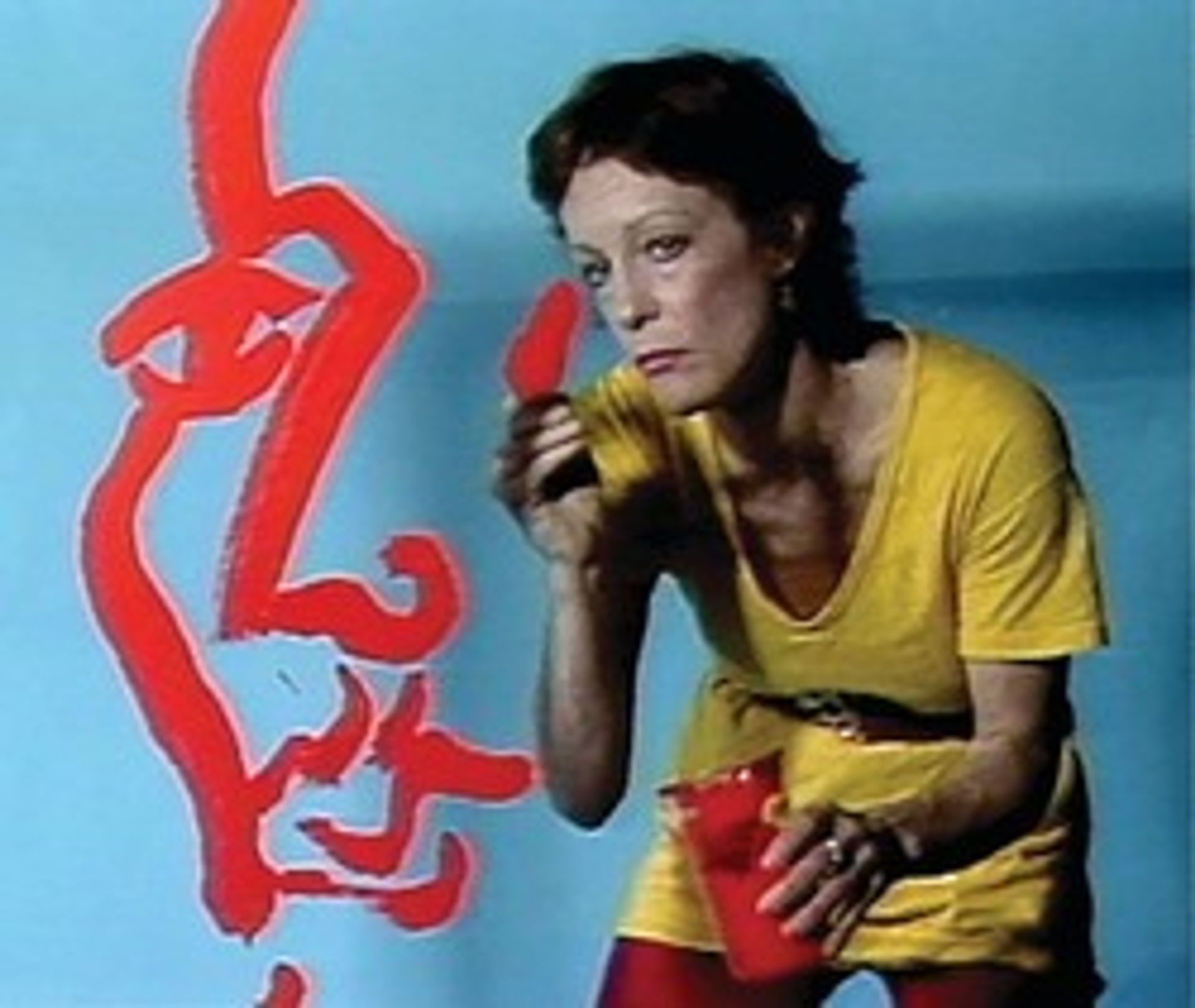Joan Jonas, the US’s representative at this year’s Biennale, is renowned as a pioneer of performance, installation and video art. Born in New York in 1936, Jonas trained as a sculptor but moved into performance in the mid-1960s, influenced by the happenings of Claes Oldenburg and the dance of Yvonne Rainer. Shortly afterwards, she became one of the first artists to explore the potential of video, getting her first camera in 1968, and also made early use of the television monitor as a sculptural object.
Yet while she was embedded in the radical art scene of downtown New York, Jonas was also developing a personal and multilayered language underpinned by folktales, mythology, poetry and ritual. Five decades later, she continues to use this language across a variety of media, including drawing, text, sound and music, as well as the moving image and bodily gesture. Relentlessly experimental, Jonas continues to collaborate with a wide range of young artists, musicians and performers.

The Art Newspaper: Right from the beginning, the space itself has played an active role in your work. How are you responding to the rather institutional galleries of the US pavilion?
Joan Jonas: The structure of each room will be generally the same: the audience enters on the left and walks through the five rooms, so it’s a kind of non-narrative narrative experience. Each room has a different theme, and in each one, there are two projections: one concerning the main subject—for instance, bees, wind, ocean, fish—and the other showing a related but parallel narrative called “Ghost Story”, which is a continuous narrative based on fragments of oral tradition from Cape Breton in Nova Scotia, Canada, where I go for the summer. So there are several different levels to the double theme of nature and ghost stories.
Is it a completely new piece?
It’s a new work and it’s really quite new in many respects. First of all, the backdrops are old footage that I shot in Nova Scotia over the past two years and in the 1990s, and we’ve reconfigured them with performers in New York in a studio with children aged five to 16, with the performers in these projected backdrops. So that’s another kind of layering device that I’m using. Each projection has a video backdrop with people performing in front of it. So there are a lot of levels; more than usual.
Will you appear in the work?
I will be there a little bit, but basically hardly at all. I appear briefly in one of the videos and then I have one monitor where I will appear.
Why is that?
Maybe I’m bored with myself. No, I had this idea that I wanted to work with children, and then the minute I saw the children, I thought: “It’s too pretentious for me to be there with them—or even in the next cut.” So it really is about them, not about me, and that interests me. I was stepping outside my work to make pictures this time: it really is new work.
Has Venice itself had any part to play?
Frankly, no. It’s something I started working on last year in Kitakyushu, Japan, at the Centre for Contemporary Art. There will be drawings in every room, and two of the rooms have drawing and object projects that I did in Japan.

How do you feel about being the US representative at Venice this year?
I don’t like to say I’m representing America, but I feel that I’m representing all the people who have given me so much support. It’s very exciting to be able to do a new work and have it seen by people in this context, but I do not feel that I am representing America; there are just too many complex thoughts associated with that. But I’m thrilled to be in the context, with other artists in the Biennale. One thing I love about being in a group show is to see everybody else’s work and to meet other artists.
You’ve talked about not seeing a difference between a poem, a sculpture, a film or a dance, and constructing your work like a poem. How do you conceive and build up a piece like this? How do you put it together?
In the past 15 years, I have been building from one piece to another, taking an idea from the last piece and developing it, even though there is a different subject. This work was inspired by and came from my last piece, Reanimation [2014], which was based on Halldór Laxness’s novel Under the Glacier. I was inspired by his poetic writing about nature and there were a couple of little phrases and paragraphs from Laxness that led to this piece. Travel also influences me: going to Japan, I found a book about Japanese fish with beautiful drawings and paintings, and I used that as a source for making my drawings of fish. Thinking about nature and fish and the environment is really where I began, and it developed from that. But this is not a didactic piece: one has to really sense the subject of the environment. I don’t even like to use the word “environment”, but I always place my pieces in the present and it does refer to the present-day situation. In Venice, the problem is water, and although I never mention that, I hope to imply through word and image how fragile the world is.

I read a quote from you that said: “Nature is my space and has been since childhood.” The natural world does seem to be a constant, if sometimes oblique, theme.
I grew up in the summers being in landscapes, so it’s just been a place that I’ve always been inspired by. Since I started working as an artist and working with a video camera in particular, I’ve been interested in the space of nature: how to define it in my work and how my work occupies that space. How do you translate that space onto a flat surface? Or into a room? How does the camera frame that space of nature? The videos are very specifically about framing and making spaces.
You’ve also used the metaphor of cooking to describe your work.
I don’t cook as much as I used to, but for many years, I tried to cook something different almost every night. Cooking was something I was fascinated by; I saw it as the combining of different ingredients that have a chemical reaction to produce a dish that tastes a certain way. When I first began making my work, I thought of it in that way: I combined the different ingredients, the materials, and served up the total work, which has a feeling, an atmosphere and a taste.

Biography Born: 1936, New York
Education: 1965 MFA, sculpture, Columbia University, New York 1961 School of the Museum of Fine Arts, Boston 1958 BA, art history and sculpture, Mount Holyoke College
Lives and works: New York
Represented by: Wilkinson Gallery, London; Gavin Brown’s Enterprise, New York; Galleria Alessandra Bonomo, Rome; Galleria Raffaella Cortese, Milan
Selected solo shows: 2014 Hangar Bicocca, Milan; Centre for Contemporary Art, Kitakyushu, Japan 2013 Contemporary Arts Museum Houston, US 2010 Museum of Modern Art, New York 2005 Jeu de Paume/Hotel de Sully, Paris 2003 Queens Museum of Art, New York 1994 Stedelijk Museum, Amsterdam 1979 Stedelijk Museum, Amsterdam; Whitechapel Gallery, London
Selected group shows: 2011 Manchester International Festival 2009 Venice Biennale 2008 São Paulo Biennial; Sydney Biennial 2002 Documenta 11, Kassel 2000 “Century City”, Tate Modern, London 1982 Documenta 7, Kassel 1977 Documenta 6, Kassel 1972 Documenta 5, Kassel

